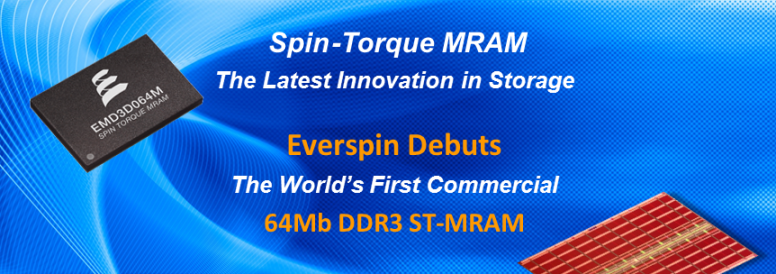Everspin began shipping STT-MRAM memory

For several years now there have been rumors about the development of new types of computer memory, but so far these projects have remained at the level of laboratory experiments or, at best, piece production. Fortunately, the situation is gradually beginning to change. The company Everspin, engaged in the development of magnetoresistive memory, announced the beginning of the supply of 64-megabit modules. Previously, the maximum amount of chips produced by them was only 16 megabits, and the MRAM technology did not allow to significantly increase the layout density, since this causes an excessive increase in the recording current. The new modules use the spin moment transfer technology ( Spin-transfer torque ), when to change the orientation of the field in a magnetic material, not the application of an external magnetic field, but the flowing current, dominated by electrons with the desired direction of spins. This allowed to avoid the problem of increasing the density of chips.
The new modules comply with the DDR3 standard, which makes it possible to use them both for creating SSD disks and in DIMM modules of RAM. However, although their speed is quite high (up to 3.2 Gb / s), the access time is still lame and exceeds that of conventional RAM by about an order of magnitude, so this configuration is unlikely to become widespread.
Of course, at this stage, the MRAM memory does not look competitive enough compared to NAND Flash. The chip density is still too low, the cost is extremely high (about 50 times higher than that of NAND), power consumption is also not high (5 times more), but MRAM also has strengths, such as very high performance and low cell wear during rewrite them. In any case, Everspin is full of optimism and plans in the coming years to achieve gigabit packing density using 20 nm technology and is even considering the possibility of replacing the usual DRAM RAM with new memory.
')
Materials:
Source: https://habr.com/ru/post/158507/
All Articles